At Arthur Andersen, communications planning was part of my day-to-day activities. And I was trained to plan communications. Our marketing department had a distinct way of doing this. (In fact, it was at Arthur Andersen that I received training on The 7 Habits.) To this day, I apply communications planning to strategic communications for service-based clients. But I’ve learned not everyone has the patience–or ability or framework–to PLAN their communications efforts.
For example, fast thinkers sometimes don’t plan their communications effectively. They expect everyone to be operating at their speed. They forget to paint the picture and bring an audience along step-by-step. They have a tendency to gloss over things or leave out elements as they discuss their vision. (I admit, I fall prey to this, too, but mostly when speaking.) They might also be overlooking opportunities to make their materials work for them. In other words, create trust or drive buyer action. Or, they attempt to achieve too much in a single communications piece. You can only move a prospect along 2 steps at a time with any given piece. And you must align communications so that you have the right materials for every stage.

This is at the heart of communications planning. And avoiding the other pitfalls.
We all forget sometimes that the purpose of written communications is in fact communication! That means we must step outside ourselves and see our writing as our audience would. (If this is difficult, outside perspective is a big help.)
It’s not just about the writing but about the structuring of the material and information so that it is palatable and powerful. People need guidance on how to read things and what is important. Not everyone can do this visually. That is, lay it out in a way that makes absorption of information seamless. This is part of the value that a strategic marketing communications consultant provides. It’s not just about semicolons and em dashes.
Even people who are expert communicators–especially in the realm of speaking–or marketers themselves may be missing out on opportunities to really communicate and engage their audiences in ways the audiences need when crafting written materials.
As a strategic marketing communications consultant, I find the blind spots that you have and help ensure your message gets communicated in an appropriate way based on an intense understanding and holistic view of the intended audience. This also means thinking outside the box about who you’re addressing and why. And of course whether this is the most effective avenue to go or segment to target. (That’s what makes it STRATEGIC.) Sometimes we are leaving money on the table and opportunities untapped because we do not have this perspective. That’s why communications planning is the Day 22 challenge of #30DaysofQ2.
Are you planning your communications–at the tactical and strategic levels? How do you know you’re being effective?
